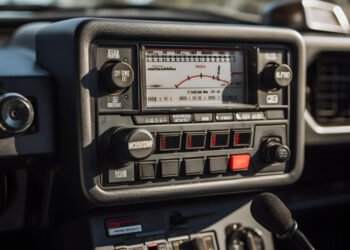In today’s fast-paced business environment, managing assets effectively is essential. Companies must track their resources to maximize utility and efficiency. Fixed asset software is a powerful tool that simplifies asset monitoring and control. Understanding the key features to look for when selecting software can significantly impact your business operations.
User-Friendly Interface
A user-friendly interface enhances the overall experience and ensures employees can use the software seamlessly with minimal training. Clear visuals and well-organized features reduce errors and improve efficiency, enabling staff to focus more on their tasks.
Comprehensive Asset Tracking
Accurate asset tracking is vital for precision and accountability. Fixed asset software should offer end-to-end tracking, covering the asset’s journey from acquisition to disposal. This comprehensive approach ensures every asset is documented throughout its lifecycle, empowering businesses to make informed decisions with up-to-date data and improving resource allocation.
Automated Depreciation Calculation
Manual depreciation calculations are prone to errors. Automated systems save time and enhance accuracy by accommodating methods like straight-line and declining balance. This flexibility ensures compliance with accounting standards while allowing businesses to adopt the method best suited to their needs.
Customizable Reporting
Every organization has unique reporting requirements. Fixed asset management software should offer a variety of customizable reporting options, enabling users to generate reports tailored to their specific needs. Access to detailed and relevant data enhances decision-making, transparency, and accountability across departments.
Seamless Integration Capabilities
Integration with other systems, such as accounting and procurement, is essential for maintaining data accuracy and minimizing errors. Fixed asset management software should streamline workflows, enhance efficiency, and ensure consistency across business processes.
Audit Support
Preparing for audits can be daunting. Fixed asset software with audit-friendly features, such as detailed logs and audit trails, simplifies this process. These tools provide transparency, help track asset histories, ensure compliance, and foster trust with stakeholders and regulatory authorities.
Robust Security and Access Control
Data security is a top priority for organizations. Fixed asset software must include strong security measures, such as role-based access control, to ensure that only authorized personnel can view or modify information. These safeguards reduce the risk of data breaches and protect sensitive information.
Remote Access
In today’s technology-driven world, remote accessibility is invaluable. Fixed asset management tools with mobile access allow employees to manage assets on the go, whether updating records or reviewing reports. This flexibility ensures smooth operations from anywhere.
Scalability
As businesses grow, their needs evolve. Scalable fixed-asset software can handle increasing amounts of data and users without compromising performance. Investing in a scalable solution minimizes the need for frequent upgrades, ensuring long-term benefits and efficiency. Scalable software adapts effortlessly to expanding operations, making it a future-proof choice for growing organizations. It ensures smooth integration of new assets, users, and functionalities without disrupting ongoing processes, saving time and resources in the long run.
Cost-Effectiveness
Cost is a significant factor when selecting software. While businesses seek comprehensive features, affordability should not be overlooked. Evaluating total ownership costs, including purchase price, maintenance, and support, enables organizations to make sound financial decisions. Efficient software investments streamline processes, reduce manual effort, and deliver cost savings over time.
Predictive Maintenance Insights
Advanced fixed asset software should include predictive maintenance features. By using AI and analytics, the software can identify potential equipment failures before they occur, helping businesses avoid costly downtime. Predictive insights allow for proactive scheduling of maintenance, improving asset longevity and operational efficiency.
Multi-language and Multi-Currency Support
For global businesses, fixed asset software should support multiple languages and currencies. This feature ensures that teams across different regions can use the software efficiently and maintain compliance with local regulations. Multi-currency capabilities streamline accounting processes for assets purchased or used internationally, fostering a unified operational framework.
Conclusion
When selecting fixed asset management software, prioritize an intuitive interface, robust tracking, and automated calculations. Customizable reporting, seamless integration, and audit support are valuable features that add depth to your operations. Additionally, ensure the software offers strong security, scalability, and cost-effectiveness. By considering these factors, businesses can choose a solution that enhances asset management efficiency and supports long-term success.












